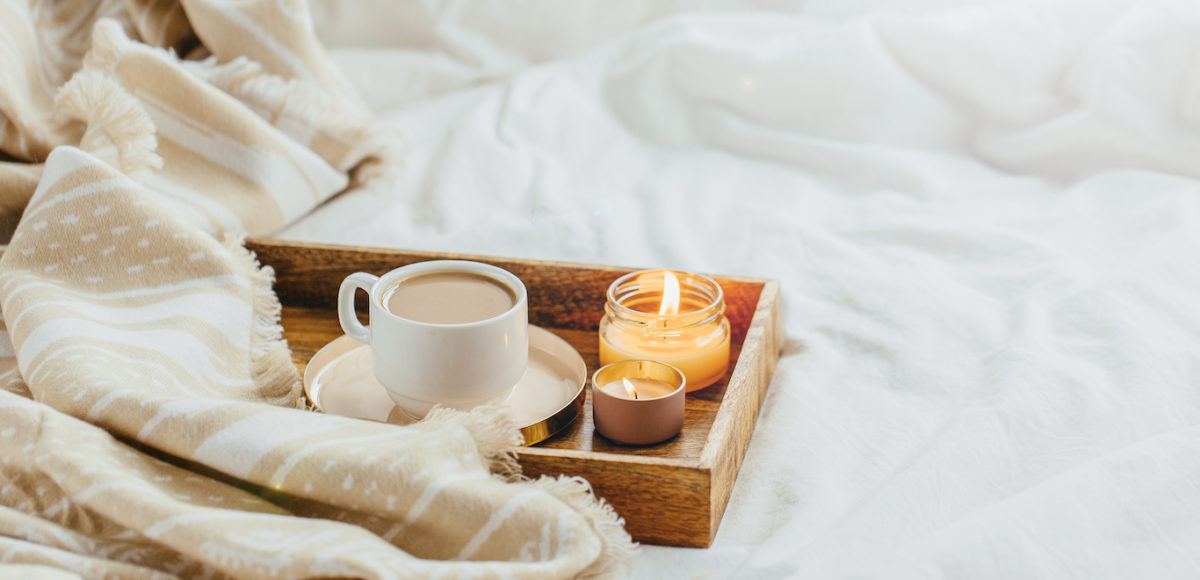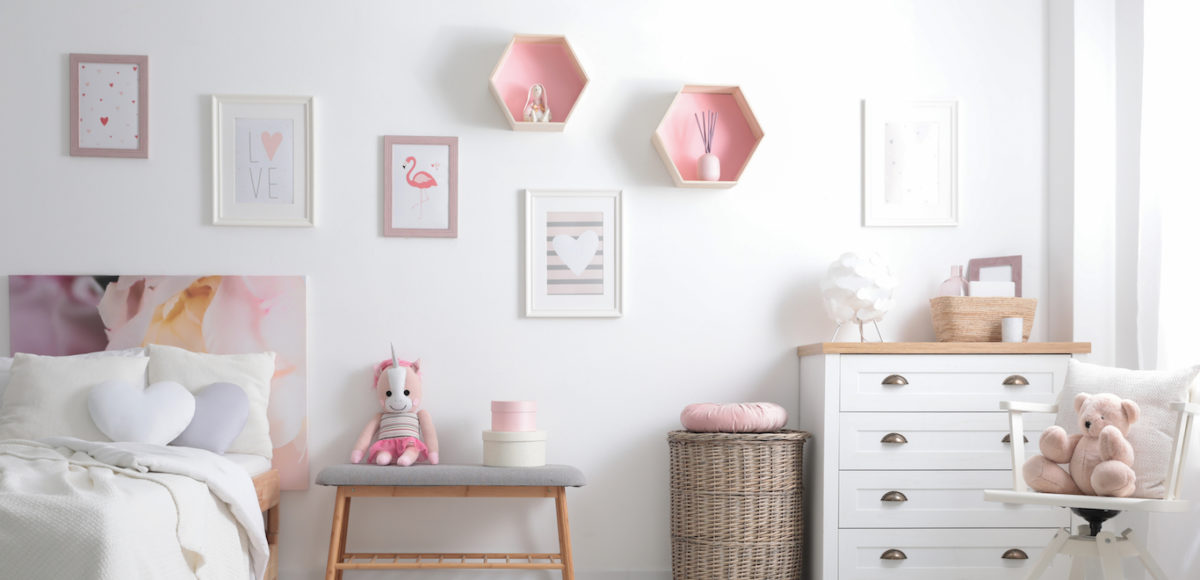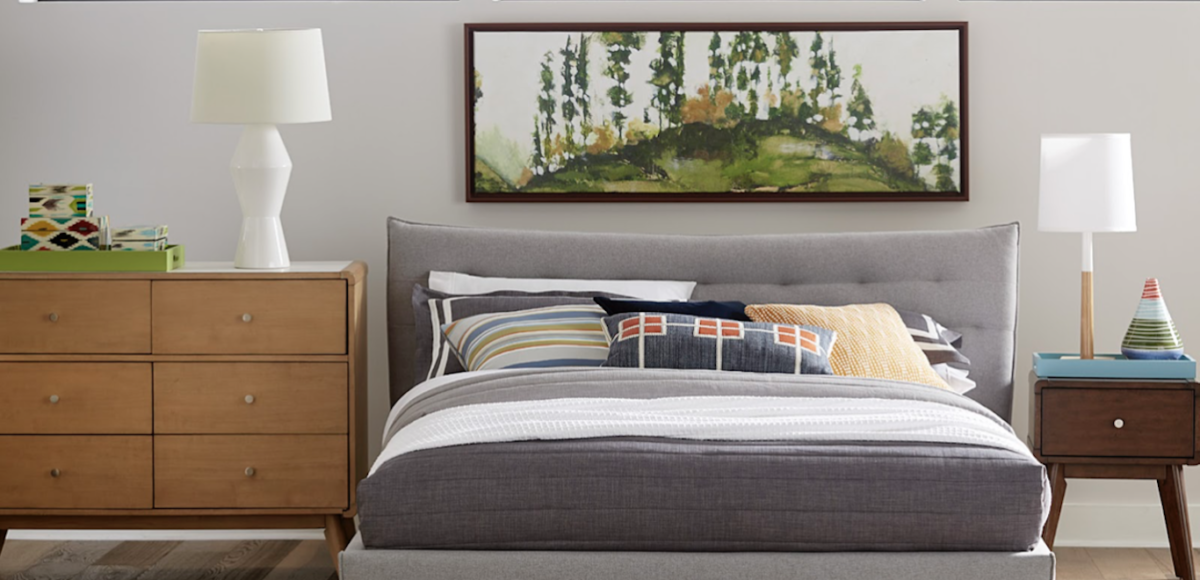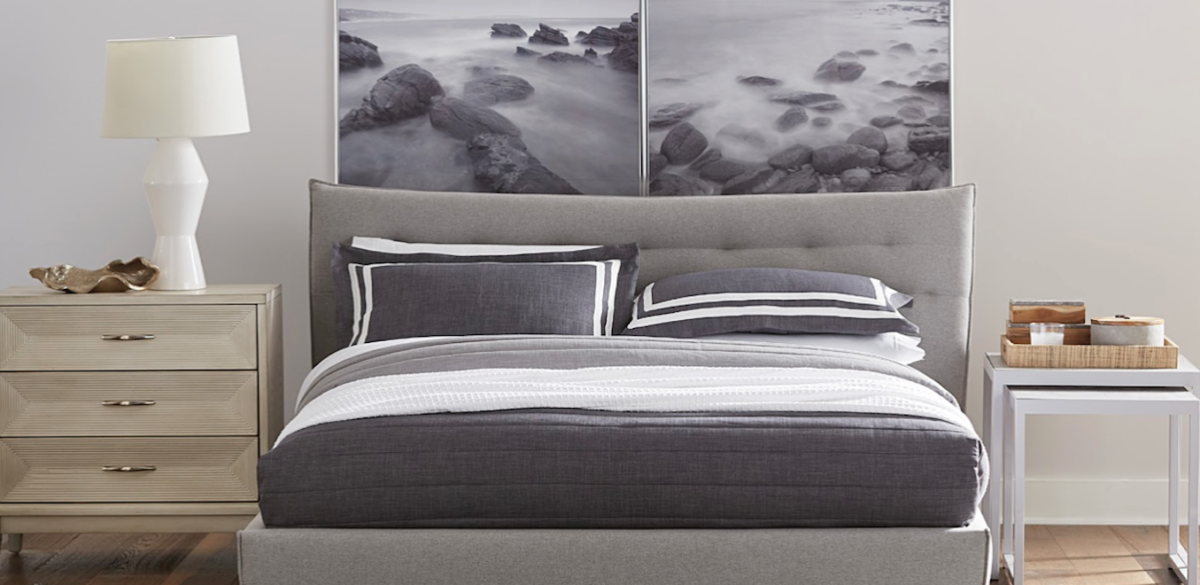There’s nothing quite like crawling into bed at the end of a long and strenuous day — unless you’re struggling to get relaxed. If you find yourself staring at your ceiling (or unlocking your phone) at night, it may be time to give your routine — and your space — a makeover. Use these eight tips to create a more relaxing bedroom for sleep.
1. Tidy Up
Loose papers piling up, folded laundry that needs to be put away, or “To Dos” lining the walls —all things that can transform even the most serene space into a stressful one. And making a habit of surrounding yourself with half-finished chores you swear you’ll get to tomorrow doesn’t just create stress while you’re awake. A tidy bedroom is better for sleep — clutter can impact your ability to get relaxed and sleep well.
Need some tips for decluttering? Start by removing any work-related or stress-inducing items from your bedroom or sleep space. Then ensure that any counter space (like your dresser or nightstands) is kept relatively bare. That means that your lighting and some decor can stay, but most everything else ought to be cleared away.
Once your initial clean-up is complete, make a nightly habit of taking 5-10 minutes to straighten up your space. Not only will your bedroom feel bigger, but you’ll feel at ease once your room is neat and tidy and sleep soundly knowing that there isn’t a looming task waiting for you once your alarm goes off.
2. Keep Necessities Nearby
If you’re up and down at bedtime or constantly on the hunt for lip balm or your favorite pair of fuzzy socks, you may want to consider keeping all of your bedtime essentials right nearby.
Add a basket onto your nightstand stocked with all of your unwinding must-haves, like
- Water
- Nighttime medications or vitamins
- Lotion
- A hairbrush
- A sleep mask
- Socks
- Soothing sleep sprays
With your nighttime essentials within arm’s reach, you’ll be able to settle in and feel confident you have everything you need.
3. Banish Blue Light
If you’re like most Americans, chances are you’re on an electronic device for a good portion of your day, whether at work, school, or unwinding on the couch. But, did you know that blue light could have negative effects on your overall health — including your sleep? Yes, you could opt for some blue-light glasses, but it’s best you just banish electronics from your room entirely. To create the ultimate relaxation experience, keep electronics out of your bedroom. Go a step further and swap out your lightbulbs. Fluorescent and LEDs can also emit blue light.
But, what color light is good for sleep? Warmer tones. Warmer tones mimic the sun at lower points — like a sunset — and are easier on the eyes while signaling to your body it’s time to wind down.
4. Switch on “Do Not Disturb” and Go Offline Around Bedtime
Not only is the blue light itself disrupting your circadian rhythm, but the mental stimulation of watching TV, responding to texts, checking emails, surfing the web, or checking your socials can also prevent you from fully relaxing and unwinding. If you want to ensure you’re getting optimal relaxation, it’s best to keep your tablet and TV time confined to your living room.
That’s why experts don’t just recommend that you keep your bedroom electronic-free, but also that you should refrain from scrolling, searching, or watching on an electronic device for a full 30 minutes to an hour before you want to nod off. Instead, you can opt to take some “me time” by indulging in your skincare routine, some quality reading time, light stretching, journaling, or intention setting before crawling into bed. If you must journal or scroll in your bedroom, consider opting for a relaxing chair for your bedroom.
5. Stay Cool
Lowering your home a degree or two in temperature can make the difference between a deep, restful night’s sleep and wakeful tossing and turning. It’s recommended that you turn down your home’s temperature a few degrees at night — between 60 and 65 degrees is optimal— before you prepare to drift off. But why is it better to sleep in the cold? At night your body temperature drops about one to two degrees. Decreasing the temperature of your room will help you get to sleep faster and stay asleep longer!
If you’re a particularly hot sleeper, may also want to opt for a cooling mattress pad, cooling pillows, sweat-wicking pajamas, and a few fans.
5. No-Work Zone
While it’s not always possible to keep your work and home life separate, you should at least aim to keep work out of your bedroom. What better excuse do you need for creating a home office?
If your bedroom does double as your office or you live in an open-concept space, consider using room dividers or bookshelves to create a clear division between your workspace and your sleeping area.
6. Consider Your Sleep Style
In order to create a relaxing bedroom, you’ll definitely need the right mattress. After all, It’s hard to relax, much less wake up early, when you’ve been tossing and turning on a mattress that feels lumpy, bumpy, or downright uncomfortable.
Comfort is subjective, but there are some general guidelines for choosing a mattress best suited for your sleep style.
- Stomach Sleepers — Firm to Extra Firm
- Back and Stomach Sleepers — Medium to Extra Firm
- Back Sleepers — Medium to Extra Firm
- Back and Side Sleepers — Medium to Firm
- Side Sleepers — Extra Soft to Medium Soft
You’ll be able to unwind and relax in no time once you have the right mattress to support your preferred sleep position.
7. Use Soothing Colors
Bold swaths of color and vivid hues make for an interesting space bursting with personality — but they might not be the best choice if you want to create a relaxing space. If you’re looking for the best bedroom colors for sleep, steer clear of bold bright hues and bold, warm tones. Interior designers promote relaxation and still create a stylish space by pairing neutral hues — think soft whites, beiges, or light grays — with cool tones.
Not sure where to start? Try keeping the majority of your bedroom furniture to light woods or natural tones, use light-toned sheets and blankets. Accent with artwork and rugs featuring muted greens, dreamy blues, or even the softest of warm tones to create a soothing space. The end result? A relaxing and gender-neutral bedroom that anyone can appreciate.
8. Create Cozy
Last, but certainly not least, ensure your bedroom is as cozy as possible. Perfume your space with soothing scents like lavender or vanilla. Layer soft, plush area rugs underfoot for added comfort and warmth. Style your bed like an interior designer and treat yourself to a set of soft sheets and an ultra-plush comforter. Line your walls with dreamy artwork — perhaps nature-inspired — to help set the tone for a soothing slumber. Have a green thumb? Consider adding plants for your bedroom that can help you sleep and generate oxygen, such as pothos, ivy, or spider plants.
Find Bedroom Furniture and Decor at CORT Furniture Outlet
A good night’s rest is crucial and starts with finding the right mattress and bedroom furniture. Turn to your local CORT Furniture Outlet or browse online today to find new and gently used mattresses, bedroom furniture, and decor at up to 70% off original prices.






